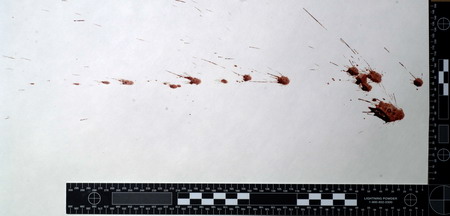WASHINGTON, DC – DEA
Special Agent Joseph Piersante this week became the first-ever member of DEA to
receive the Secretary of Defense Medal for the Defense of Freedom. Piersante
was struck by enemy gun fire while on a counter-terrorism and narcotics mission
in Afghanistan in 2011.
The Defense of Freedom Medal is the civilian equivalent of
the military's Purple Heart. The first recipients honored were those Defense
Department civilians injured or killed as a result of the terrorist attack on
the Pentagon on 9/11. The medal “shall be awarded to employees who are killed
or who sustain injury due to hostile action against the United States of
America, or killed or wounded while rescuing or attempting to rescue any other
employee or individual subjected to injuries sustained under such conditions,”
according to the Department of Defense.
Piersante’s recovery from this life-threatening event has
been nothing short of miraculous.
Through hard work and determination, as well as incredible doctors,
EMTs, team members, therapists, trainers, family, and friends along the way, he
has returned to his Special Agent duties at DEA FAST headquarters in Virginia.
In addition, Piersante has inspired many in and out of law enforcement,
participating in speaking engagements, motivational opportunities, and training
in areas such as overcoming adversity, never giving up, and putting your life
on the line for the good of our great nation. His inspirational story will
continue forever to be told not just by him, but by many in and out of DEA.
Since the incident, Special Agent Piersante has received
numerous awards from a variety of organizations, including the Federal
Congressional Badge of Bravery from the United States Congress, and from his
alma mater, Adrian College in Michigan, where he played football.
The Secretary of Defense Medal for the Defense of Freedom
itself consists of a golden circle framing a bald eagle holding a shield which
exemplifies the principles of freedom and the defense of those freedoms upon
which our nation is founded. The reverse of the medal is inscribed with
"On Behalf of a Grateful Nation" with a space for the recipient's
name to be inscribed. The laurel wreath represents honor and high achievement.
The ribbon is the red, white and blue. The red stripes commemorate valor and
sacrifice. The wide blue stripe represents strength. The white stripes
symbolize liberty as represented in our national flag. The number of red
stripes represents the four terrorist attacks using hijacked airplanes and the
single blue stripe represents the terrorist attack on the Pentagon on Sept. 11,
2001.







